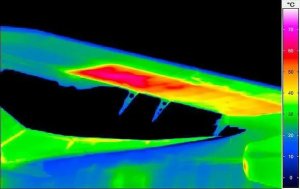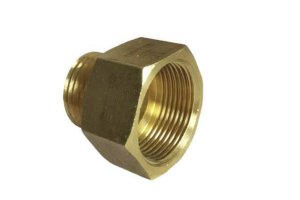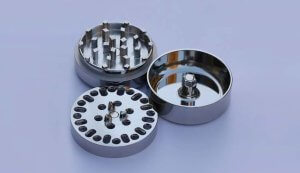Introduction
If you’ve ever worked in machining or fabrication, you’ve probably encountered the term “bevel cut.” A bevel cut is one of those fundamental techniques that shows up in welding, woodworking, construction, and more. It’s essentially the angled cut you make on the edge of a material, whether it’s metal, wood, or even plastic. These cuts are everywhere—welding joints, decorative edges, furniture fittings, or even aerospace components.
For years, I’ve worked with teams optimizing machining techniques, and bevel cut has always been a staple in our operations. In this guide, I’ll break down everything you need to know about bevel cuts—from their basics and machining techniques to tools and quality control methods.
So, whether you’re an engineer looking to perfect your CNC machining process or a hobbyist woodworker trying to figure out the best tools for angled cuts, this guide is for you.
Fundamentals of Bevel Cut
What is a Bevel Cut?
A bevel cut is a cut made at an angle other than 90° along the edge of a material. It’s commonly used to create a slanted edge for aesthetic purposes, functional joints, or material preparation. Unlike a chamfer, which typically refers to a 45° edge cut, a bevel cut can be at any angle, making it more versatile in applications.
Common Angles in bevel cut
bevel cut are often made at specific angles, depending on their intended purpose. Here’s a quick overview of typical angles and their uses:
| Angle | Application |
|---|---|
| 30° | Welding joints, pipe fittings. |
| 45° | Decorative edges, woodworking. |
| 60° | Specialized metal joints requiring deep penetration welding. |
| Custom | Specific design requirements for aerospace or automotive parts. |
Bevel Cut vs. Chamfer
It’s easy to confuse a bevel cut with a chamfer. While both involve angled edges, their applications differ:
- A bevel cut can be at any angle and often involves deeper cuts for structural purposes.
- A chamfer is typically a smaller, 45° cut used to ease sharp edges.
Materials Suitable for bevel cut
bevel cut is used across various materials, each with its unique challenges:
| Material | Characteristics | Challenges |
|---|---|---|
| Steel | Strong, durable, ideal for structural applications. | Requires high-power tools to avoid warping. |
| Aluminum | Lightweight, corrosion-resistant. | Risk of edge burring without proper tools. |
| Wood | Easy to cut, widely used in furniture and construction. | Maintaining precision with grain direction. |
| Plastics | Lightweight, used in decorative and industrial applications. | Melting or chipping during cutting. |
| Composites | High strength-to-weight ratio, common in aerospace. | Delamination risks during high-speed cutting. |
Understanding the material you’re working with is key to selecting the right tools and techniques for bevel cut.
Methods of bevel cut
When it comes to creating bevel cuts, there are several methods to choose from. Each has its strengths, limitations, and ideal use cases. Here’s a closer look:
Manual bevel cut
Manual methods are often used for small-scale or custom projects:
- Tools: Sliding T bevels, hand saws, and grinding wheels.
- Advantages: Cost-effective for low-volume work.
- Challenges: Limited precision compared to automated methods.
CNC Machining for Bevel Cuts
CNC machining offers unparalleled precision and efficiency:
- Steps in CNC bevel cut:
- Programming: Using CAD/CAM software to design the bevel.
- Tool Setup: Selecting chamfer mills or specialized cutters.
- Execution: Adjusting cutting parameters like speed and feed rate.
- Common CNC Machines Used:
- CNC mills: For beveling flat surfaces.
- CNC lathes: Ideal for cylindrical components.
- Laser cutters: High-precision cuts, especially in metals.
Advantages of CNC for bevel cut
| Feature | Benefits |
|---|---|
| Precision | Achieve micrometer-level tolerances. |
| Repeatability | Perfect for mass production. |
| Flexibility | Handles complex angles and geometries. |
| Material Versatility | Cuts metals, plastics, composites, and more. |
Advanced Techniques
Some advanced bevel cut methods include:
- Laser Cutting: Ideal for thin metals with high precision and minimal heat distortion.
- Waterjet Cutting: Best for materials like composites or plastics that might melt under heat.
- Plasma Cutting: Cost-effective for thick metal plates but less precise.
Each method serves specific needs, making it crucial to align your choice with the material and project requirements.
Applications of Bevel Cut
bevel cut play a vital role in various industries. Let’s explore some of the most common applications:
Welding Preparation
One of the primary uses of bevel cut is in welding. By creating a beveled edge, you increase the surface area for the weld, resulting in stronger joints. Common bevel types in welding include:
- Single Bevel: For lightweight structures.
- Double Bevel: For heavy-duty joints.
Mechanical Component Manufacturing
From gears to shafts, bevel cut are essential in mechanical engineering. They help:
- Improve load distribution.
- Enhance component fit during assembly.
Woodworking and Construction
In woodworking, bevel cut are used for:
- Decorative edges.
- Precise corner joints.
Construction applications include:
- Structural frameworks.
- Angled connections in trusses.
Aerospace and Automotive
bevel cut are crucial for:
- Enhancing aerodynamics.
- Reducing material weight while maintaining structural integrity.
Challenges and Solutions in bevel cut
Like any machining process, bevel cut comes with its own set of challenges. From inconsistent cuts to material-specific issues, overcoming these obstacles is key to achieving high-quality results.
Common Challenges in bevel cut
- Inconsistent Angles
Issue: Maintaining precise angles can be difficult, especially for manual cuts or when working with complex geometries.
Impact: Leads to poor fitment in assembly or welding joints. - Surface Roughness
Issue: bevel cut often result in rough edges, especially when cutting hard materials like steel.
Impact: Rough surfaces can compromise weld strength and aesthetics. - Tool Wear
Issue: Frequent bevel cut, especially on abrasive materials, can wear out tools quickly.
Impact: Increases operational costs and reduces precision. - Material-Specific Problems
Steel: Warping due to heat during high-speed cutting.
Aluminum: Burr formation on edges.
Wood: Splintering along grain lines. - Machine Calibration
Issue: CNC machines require precise calibration to maintain consistent cuts.
Impact: Poor calibration leads to dimensional inaccuracies.
Solutions to bevel cut Challenges
1. Maintaining Angle Precision
- Use CAD/CAM software to predefine toolpaths for CNC cutting.
- Invest in adjustable bevel gauges for manual operations.
2. Improving Surface Finish
- Optimize cutting speed and feed rates.
- Use high-quality cutting tools, such as carbide-tipped blades.
- Employ post-processing techniques like grinding or polishing.
3. Extending Tool Life
- Use the appropriate cutting tools for the material.
- Implement proper lubrication and cooling systems during machining.
4. Material-Specific Adjustments
- Steel: Reduce cutting speeds to minimize heat buildup.
- Aluminum: Use sharp tools and apply deburring processes.
- Wood: Use fine-toothed blades and cut along the grain direction.
5. Regular Maintenance and Calibration
- Calibrate CNC machines regularly to ensure consistent performance.
- Train operators to recognize and address alignment issues.
Key Metrics for Quality Control
When addressing challenges in bevel cut, implementing robust quality control is critical. Here are key metrics to monitor:
| Metric | Description | Method of Measurement |
|---|---|---|
| Angle Tolerance | Accuracy of the bevel angle (e.g., ±0.5°). | Digital angle finders, CNC reports. |
| Surface Roughness | Measurement of finish quality (Ra value in micrometers). | Profilometers, visual inspection. |
| Edge Quality | Smoothness and absence of burrs or chips. | Visual checks, hand tools. |
| Dimensional Accuracy | Verification of cut depth and length. | Calipers, coordinate measuring machines. |
| Weld Penetration | For welding applications, ensuring proper bevel depth for strong joints. | Ultrasonic testing. |
Tools, Techniques, and Recommendations
The right tools and techniques can make all the difference in bevel cut, whether you’re working manually or using CNC machines.
Recommended Tools for bevel cut
| Tool | Application | Best For |
|---|---|---|
| Sliding T Bevel | Manually transferring angles onto materials. | Woodworking, basic layouts. |
| Chamfer Mills | Precision bevels in CNC machining. | Metals and hard plastics. |
| Plasma Cutters | High-speed bevel cut in thick metals. | Structural steel fabrication. |
| Miter Saws | Angled cuts in wood and lightweight materials. | Furniture and construction. |
| Laser Cutters | Ultra-precise bevel cut with minimal material deformation. | Aerospace, electronics. |
| Waterjet Cutters | Cold-cutting bevels in heat-sensitive materials. | Composites, soft metals. |
Techniques for Precision
- CNC Programming for Bevel Cuts
Use CAM software to create accurate toolpaths.
Simulate cuts before execution to avoid errors. - Manual Techniques
Use T bevel gauges to mark precise angles.
Apply clamps to secure materials during cutting. - Post-Processing
Grind or sand edges to refine surface finish.
Apply protective coatings to prevent corrosion in metal cuts.
Cost-Effective Strategies
- Tool Selection: Choose durable tools to minimize replacement costs.
- Batch Processing: Optimize CNC setups for multiple cuts in one go.
- Material Utilization: Plan cuts to maximize material usage and reduce waste.
Case Studies and Industry Trends
Real-world applications and emerging trends highlight how bevel cut continues to evolve.
Case Studies
1. Welding Pipelines
- Problem: Weak joints due to improper bevel angles.
- Solution: Implemented CNC bevel cut to create precise 30° and 60° angles.
- Outcome: Increased joint strength by 25%.
2. Aerospace Component Manufacturing
- Problem: High rejection rates in composite part production due to edge delamination.
- Solution: Used waterjet cutting for clean, burr-free bevels.
- Outcome: Reduced waste and improved production efficiency.
Emerging Trends
- Automation in bevel cut
Robotic arms integrated with CNC machines for beveling.
AI-powered software for real-time toolpath adjustments. - Advanced Materials
Growing demand for bevel cut in titanium and carbon-fiber composites. - Sustainability
Focus on reducing material waste during bevel cut.
Conclusion
bevel cut is an indispensable machining technique across industries, from welding and construction to aerospace and automotive. By mastering the tools, techniques, and quality control processes outlined in this guide, you can achieve precise, efficient, and high-quality bevel cut for any application.
FAQ
- What is a bevel cut?
A bevel cut is an angled cut along the edge of a material, commonly used for welding, aesthetics, or functionality. - How is a bevel cut different from a chamfer?
A bevel cut can be at any angle, while a chamfer is usually a smaller, standardized 45° cut. - What tools are best for bevel cut?
Tools range from sliding T bevels for manual work to CNC machines, laser cutters, and waterjets for precision cutting. - What materials can be bevel cut?
Metals, wood, plastics, and composites are commonly bevel cut materials. - How do I ensure precision in bevel cut?
Use CAD/CAM software for programming and maintain machine calibration. - Can bevel cut improve welding joints?
Yes, they provide larger surface areas for stronger welds. - What’s the best way to avoid rough edges?
Use sharp tools, correct cutting speeds, and apply post-processing techniques like grinding. - What is the role of quality control in bevel cut?
It ensures consistent angles, smooth surfaces, and dimensional accuracy. - Are bevel cut standardized?
Yes, industries like welding follow standards like AWS or ISO guidelines for bevel dimensions. - What trends are shaping the future of bevel cut?
Automation, advanced materials, and sustainability are driving innovation.
Other Articles You Might Enjoy
- Chamfered Edge in CNC Machining Techniques and Applications
Why Chamfered Edge Matters in CNC Machining A chamfered edge may seem like a small detail in machining, but it is a critical element in both design and manufacturing. This…
- Countersink in CNC Machining: A Complete Guide
Understanding Countersink in CNC Machining In CNC machining, precision isn't just a feature—it's a requirement. One critical process that often gets overlooked is the countersink. A small, conical recess at the…
- Chamfer Tool Essentials: Boost Your CNC Machining Efficiency
As I embarked on my journey in the world of CNC machining, one tool quickly became indispensable in my arsenal—the Chamfer Tool. Whether you’re a seasoned machinist or just starting…
- Understanding Counterbore and CNC Techniques Tools and Applications
What is Counterbore and Why Does It Matter in CNC Machining? Counterbore is a term that frequently comes up in machining and manufacturing, especially in industries that require precision assembly.…
- Choosing the Right Chamfer Bit for Optimal CNC Edge Processing
In the world of CNC machining, precision is everything. Whether you're crafting complex components for aerospace or simple fixtures for everyday use, the attention to detail can make all the…
- Exploring the Wonders of Cutting Fluids in CNC Machining Parts
Cutting fluids play a crucial role in the world of CNC machining, and their significance cannot be overstated. Whether it's reducing friction and wear, cooling down the cutting zone, or…
- The Dependable Quality Assurance in China CNC Machining
1. Introduction: Setting the Stage for Quality Excellence In this introductory section, we lay the groundwork for an exploration into the world of quality assurance in China CNC machining. We…
- Applications and Advantages of Bronze CNC Machining
1. Introduction: The Enduring Allure of Bronze in CNC Machining In this opening section, we explore the timeless appeal of bronze as a material for CNC machining. From its rich…










 Afrikaans
Afrikaans Albanian
Albanian Amharic
Amharic Arabic
Arabic Armenian
Armenian Azerbaijani
Azerbaijani Basque
Basque Belarusian
Belarusian Bengali
Bengali Bosnian
Bosnian Bulgarian
Bulgarian Catalan
Catalan Cebuano
Cebuano Chichewa
Chichewa Chinese (Simplified)
Chinese (Simplified) Chinese (Traditional)
Chinese (Traditional) Corsican
Corsican Croatian
Croatian Czech
Czech Danish
Danish Dutch
Dutch English
English Esperanto
Esperanto Estonian
Estonian Filipino
Filipino Finnish
Finnish French
French Frisian
Frisian Galician
Galician Georgian
Georgian German
German Greek
Greek Gujarati
Gujarati Haitian Creole
Haitian Creole Hausa
Hausa Hawaiian
Hawaiian Hebrew
Hebrew Hindi
Hindi Hmong
Hmong Hungarian
Hungarian Icelandic
Icelandic Igbo
Igbo Indonesian
Indonesian Irish
Irish Italian
Italian Japanese
Japanese Javanese
Javanese Kannada
Kannada Kazakh
Kazakh Khmer
Khmer Korean
Korean Kurdish (Kurmanji)
Kurdish (Kurmanji) Kyrgyz
Kyrgyz Lao
Lao Latin
Latin Latvian
Latvian Lithuanian
Lithuanian Luxembourgish
Luxembourgish Macedonian
Macedonian Malagasy
Malagasy Malay
Malay Malayalam
Malayalam Maltese
Maltese Maori
Maori Marathi
Marathi Mongolian
Mongolian Myanmar (Burmese)
Myanmar (Burmese) Nepali
Nepali Norwegian
Norwegian Pashto
Pashto Persian
Persian Polish
Polish Portuguese
Portuguese Punjabi
Punjabi Romanian
Romanian Russian
Russian Samoan
Samoan Scottish Gaelic
Scottish Gaelic Serbian
Serbian Sesotho
Sesotho Shona
Shona Sindhi
Sindhi Sinhala
Sinhala Slovak
Slovak Slovenian
Slovenian Somali
Somali Spanish
Spanish Sundanese
Sundanese Swahili
Swahili Swedish
Swedish Tajik
Tajik Tamil
Tamil Telugu
Telugu Thai
Thai Turkish
Turkish Ukrainian
Ukrainian Urdu
Urdu Uzbek
Uzbek Vietnamese
Vietnamese Welsh
Welsh Xhosa
Xhosa Yiddish
Yiddish Yoruba
Yoruba Zulu
Zulu